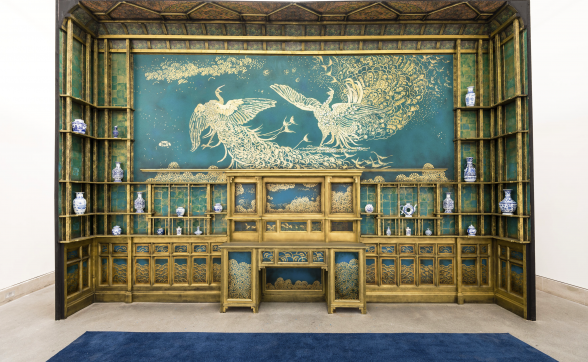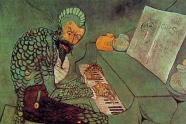One of the most influential figures in the arts of the nineteenth-century, Whistler played an important role in paving the way for abstract painting, but was also the first to consider the exhibition space as a total environment, creating colour schemes and arrangements that on one occasion extended to the yellow clothing worn by the gallery attendants. Equally concerned with the way his art was received, Whistler was active in directing conversation around his work, and about art at large. For example, in 1883 he used derogatory reviews of his work as captions for an exhibition of etchings, and in 1878, he notoriously sued the prominent critic John Ruskin, who had accused him of metaphorically ‘flinging a pot of paint in the face of the public’. This well-publicised trial was a perfect moment for Whistler to raise very contemporary concerns about art’s relationship to realism. The action also forced his detractors to take a public stand, and explicitly situated art as a matter of public concern.
More than 100 years after his death, Whistler takes part in A Needle Walks into a Haystack because his attitude, motivations and commitment are as resonant now as they ever were. Whistler spoke for himself, and to continue his legacy we’ve summoned his thoughts and writings to guide you through the show.
This exhibition is curated by Mai Abu ElDahab and Rosie Cooper.
The curators are grateful for the expert and creative advice of Margaret Macdonald, Professor Emeritus, Glasgow University.
the Bluecoat
School Lane
Liverpool L1 3BX
0151 702 5324
Visit website
Liverpool Biennial
55 New Bird Street
Liverpool L1 0BW
- T +44 (0)151 709 7444
- info@biennial.com
Liverpool Biennial is funded by
Founding Supporter
James Moores





